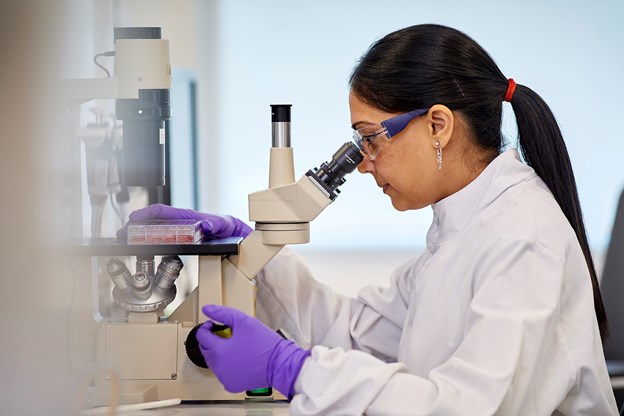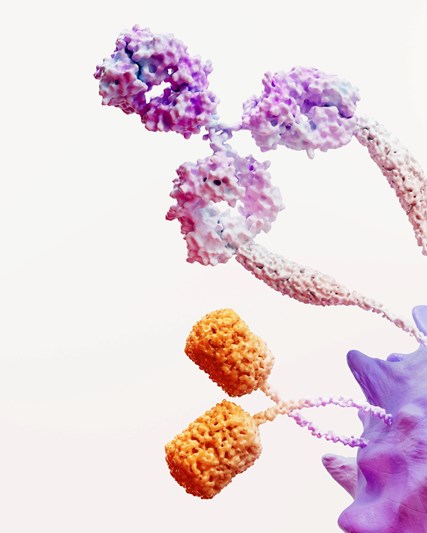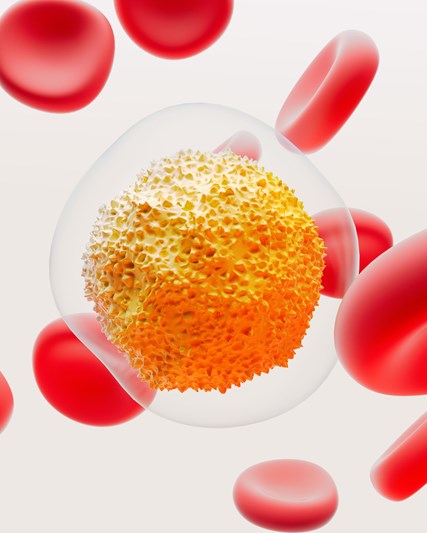
What is endometrial cancer?
What are the signs and symptoms of endometrial cancer?
The most common symptoms of endometrial cancer are:3
-
Abnormal vaginal bleeding
-
~90% of people with endometrial cancer will experience abnormal vaginal bleeding such as a change in periods, bleeding between periods, or bleeding after menopause.
-
Non-bloody vaginal discharge
Additional common late-stage symptoms of endometrial cancer include:3
-
Pelvic pain
-
Feeling a mass
-
Weight loss without trying
What is the unmet need in endometrial cancer?
-
The majority of people who have endometrial cancer are diagnosed early and are cured with surgery.4
-
However, for those whose disease recurs after platinum-based chemotherapy, there are limited treatment options.5
-
Approximately 1 in 4 people with endometrial cancer experience a recurrence or are diagnosed with advanced disease each year.6
-
Endometrial cancer has the highest rate of mismatch repair deficiency (dMMR) among tumor types,7
at approximately 25%,8 and increased rates of recurrence have been reported for some people with dMMR endometrial cancer9resulting in an unmet need for expanded treatment options. -
In normal cells, Mismatch Repair (MMR) corrects errors that are introduced during DNA replication via enzymes. Under normal conditions, the enzymes as part of the MMR system restore DNA integrity by detecting and fixing the erroneous strands.10
-
When this process is defective it is known as Mismatch Repair Deficient (dMMR). dMMR is the result of the enzymes no longer functioning properly, leading to errors in the DNA that go unchecked.10,11
-
A dMMR system may result in the accumulation of these errors and may lead to cancer.11
How is endometrial cancer diagnosed?
- Endometrial cancer is usually diagnosed after a person visits their doctor due to a variety of abnormal symptoms. Pelvic examination, ultrasounds, CT scans, MRIs and endometrial tissue sampling may all be used to diagnose endometrial cancer.12
Who is at increased risk for endometrial cancer?
- Certain risk factors can increase the likelihood that a person will develop endometrial cancer, such as obesity, things that affect hormone levels, age, diet and exercise, type 2 diabetes, family history, past history of breast or ovarian cancer, treatment with radiation therapy to the pelvis and past history of endometrial hyperplasia.13
References
1. American Cancer Society. What is Endometrial Cancer? www.cancer.org/cancer/types/endometrial-cancer/about/what-is-endometrial-cancer.html. Accessed May 2023
2. American Cancer Society. Key Statistics for Endometrial Cancer. Accessed May 2023. https://www.cancer.org/cancer/types/endometrial-cancer/about/key-statistics.html
3. Signs and Symptoms Of Endometrial Cancer. American Cancer Society. https://www.cancer.org/cancer/endometrial-cancer/detection-diagnosis-staging/signs-and-symptoms.html. Last updated March 17, 2019. Accessed May 2023.
4.Cancer Facts & Figures 2022. American Cancer Society. Accessed May 2023. https://www.cancer.org/content/dam/cancer-org/research/cancer-facts-and-statistics/annual-cancer-facts-and-figures/2022/2022-cancer-facts-and-figures.pdf
5.Burke WM, Orr J, Leitao M, et al. Endometrial Cancer: a review and current management strategies: part II. Gynecol Oncol. 2014;134(2):393-402.
6.CancerMPact® Patient Metric, Kantar. Accessed May 2023. cancermpact.com.
7.Le DT, Durham JN Smith KN, et al. Mismatch repair deficiency predicts response of solid tumors to PD-1 blockade. Science 2017;357(6349):409-413.
8.Lorenzi M, Amonkar M, Zhang J, et al. Epidemiology of microsatellite instability high (MSI-H) and deficient mismatch repair (dMMR) in solid tumor: a structured literature review. Journal of Oncology 2020; Article ID 1807929
9.Backes FJ, Haag J, Cosgrove CS, et al. Mismatch repair deficiency identifies patients with high-intermediate risk (HIR) endometrioid endometrial cancer at the highest risk of recurrence: a prognostic biomarker. Cancer 2019;125(3):398-405.
10.Microsatellite Instability – Defective DNA Mismatch Repair: ESMO Biomarker Factsheet. Retrieved May 2023, from https://oncologypro.esmo.org/education-library/factsheets-on-biomarkers/microsatellite-instability-defective-dna-mismatch-repair (ESMO p1 [DNA mismatch repair] lines 1-2).
11.Mismatch Repair Deficiency – NCI Dictionaries. Accessed May 2023, from https://www.cancer.gov/publications/dictionaries/cancer-terms/def/mismatch-repair-deficiency
12.Tests for Endometrial Cancer. American Cancer Society. https://www.cancer.org/cancer/endometrial-cancer/detection-diagnosis-staging/how-diagnosed.html. Last updated April 22, 2021. Accessed May 2023.
13.Endometrial Cancer Risk Factors. American Cancer Society. https://www.cancer.org/cancer/endometrial-cancer/causes-risks-prevention/risk-factors.html. Last updated March 27, 2019. Accessed May 2023.



